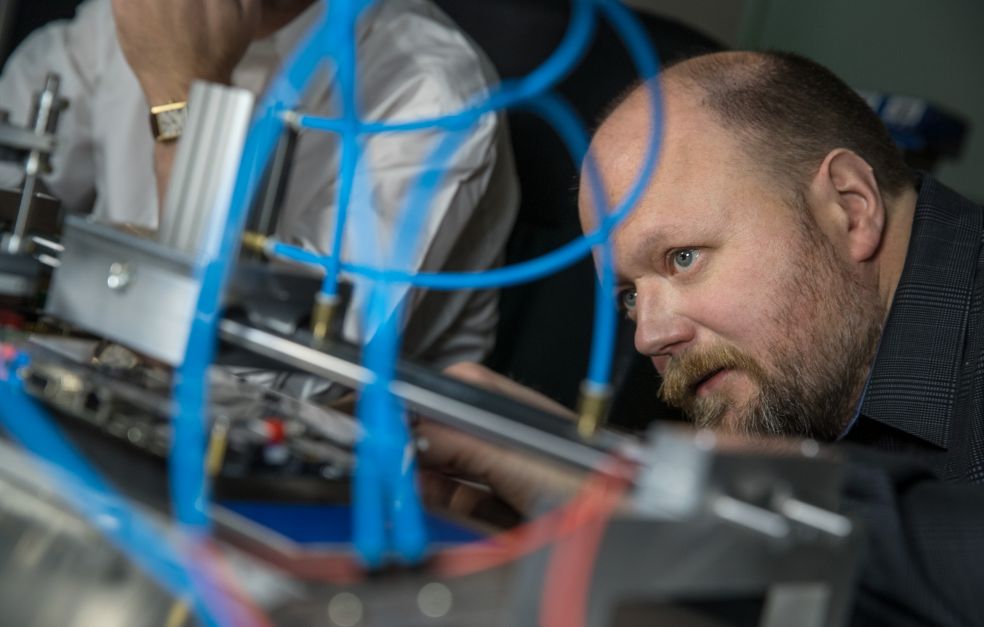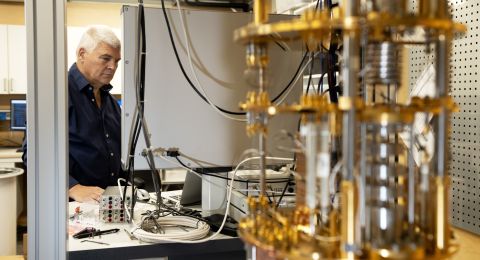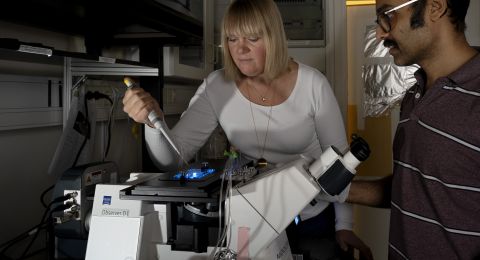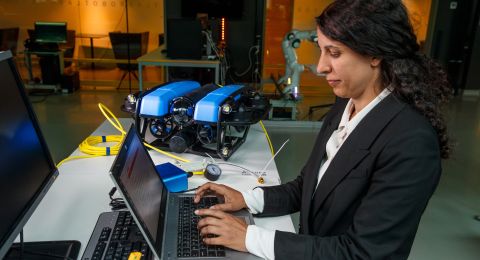
Project Grant 2017
CLASH: Pinning down the origin of collective effects in small collision systems
Principal investigator:
Peter Christiansen, Associate Professor
Co-investigator:
Leif Lönnblad
Institution:
Lund University
Grant in SEK:
SEK 26.2 million over five years
The goal of the project is to find out more about some of the smallest particles in the universe: quarks and gluons. The researchers each have their own ideas about what they will find. And they do not agree at all.
“We have high hopes of arriving at new conclusions. But it’s true that we’re both kind of hoping that one of us is right, and the other is wrong,” says Peter Christiansen with a smile.
He works at the Department of Experimental Particle Physics, and his colleague Leif Lönnblad at the Department of Theoretical Particle Physics, both at Lund University. The two men are researching on quarks, gluons and quark-gluon plasma. It is believed that these are the matter that made up the universe in its first microsecond. Quarks and gluons are building blocks in protons and neutrons. All quarks and gluons are now bound in these larger particles. But quarks and gluons originally existed free as a hot jumble of particles called a quark-gluon plasma, and behaved like a liquid.
The Knut and Alice Wallenberg Foundation is funding a project in which the Lund researchers are studying particles and plasma in new ways. Their approach is based on experiments using the LHC accelerator at the CERN research facility in Switzerland.
Heavy and light collisions differ
Many of the experiments at CERN involve accelerating protons and colliding them with each other. But one month a year lead nuclei are collided in the accelerator. They are big and heavy, and a large number of new particles result from the collisions. The lead experiment at CERN is called ALICE, an acronym of “A Large Ion Collider Experiment”. Over 1,500 researchers and engineers are involved. The experiment has developed over decades, and researchers from Lund have been involved right from the outset. Topics range from what happens when matter becomes thousands of times hotter than the heart of the sun, to whether quarks can be made to exist freely.
The researchers are actually creating quark-gluon plasma in the accelerator by colliding lead nuclei with each other. The plasma cannot be studied directly, but detectors around the point of collision enable researchers to measure the particles formed when the plasma has cooled.
Particles have been seen to behave in new ways in these lead nuclei collisions. These behaviors were first thought to be unlike anything resulting from proton collisions. But as researchers have learnt how to measure the new phenomena, they have identified similar behaviors in proton-proton collisions as well.
And it is here that the views of the two Lund researchers diverge.
Approaching from different directions
Christiansen and his research team are convinced that plasma is also formed by proton-proton collisions. They think that the measurement results suggest that this smaller system also behaves as if it were liquid immediately after the collision.
However, Lönnblad, who is an expert on particle collision theory, believes there is another explanation for the results. He considers that the new effects can be incorporated in the proton collision model, without assuming the existence of a plasma.
“So we have two different descriptions of the event, and they can’t both be true. That’s why we call our project ‘CLASH’,” Christiansen explains.
The two researchers now want to develop new methods to analyze both lead collisions and proton collisions. Lönnblad is redesigning his model to make it more general.
The aim is for it to be capable of describing collisions between two protons, between protons and lead nuclei, and between two lead nuclei. Christiansen’s job, working in the lab, is to compare the heavy collisions with the light ones, and see whether he finds more effects in both systems.
“The great thing about this is that we have a central question that we are approaching from two directions. We want to identify more sensitive measurement methods that can lead to more detailed models. After all, Leif is an expert in his field, and I in mine, so we think we can achieve really good results. True – our differences of opinion can be a little frustrating sometimes, but we do agree on the scientific method, and that’s our salvation…”
This project has been evolving over a number of years alongside other, larger projects. But the fresh funding the project has received means that Christiansen and Lönnblad will be devoting most of their time to it. In addition to the handful of colleagues in Lund who will also be involved, they hope to invite fellow researchers from other institutions to discuss ideas and work out what is needed to obtain answers to the questions.
“It’s not about measuring some individual parameter more accurately – it’s about gaining new insight into how quarks and gluons behave. The universe is based on astonishingly few particles and forces. That’s why it will be such a big deal if we actually learn something fundamentally new about them.”
Text Lisa Kirsebom
Translation Maxwell Arding
Photo Magnus Bergström





